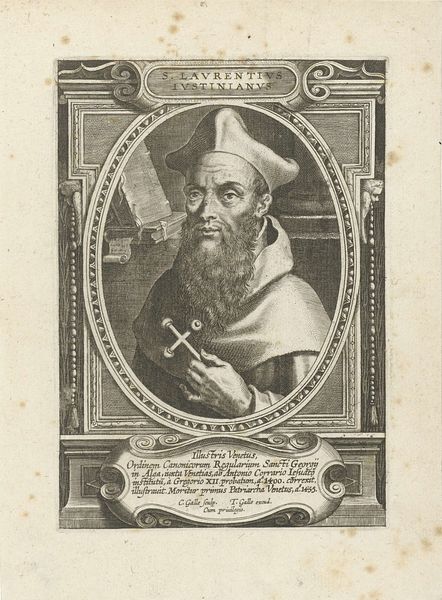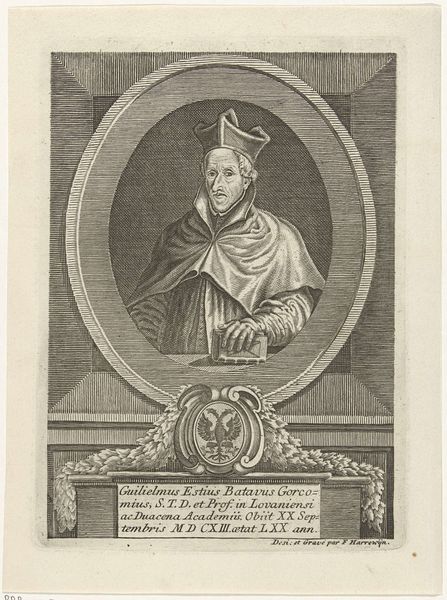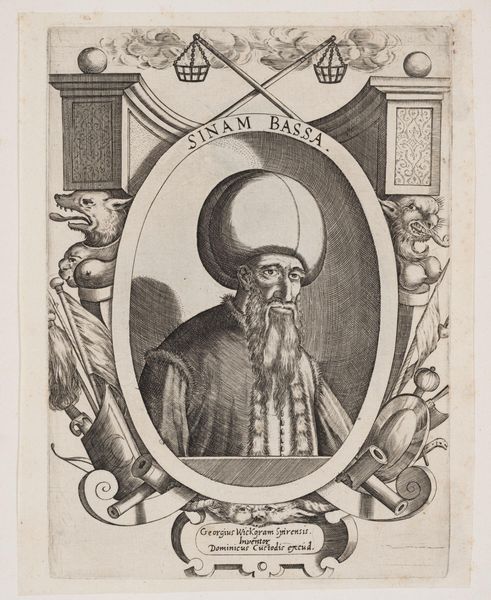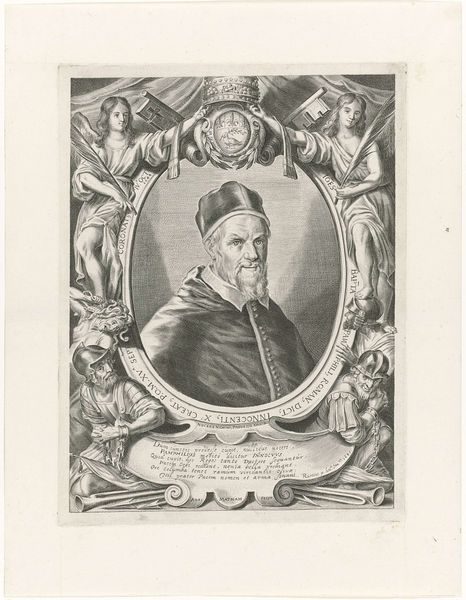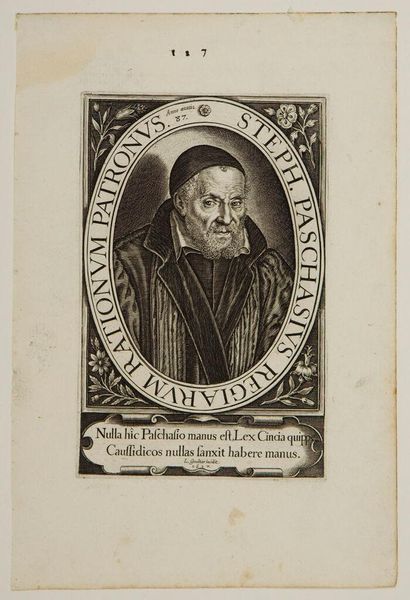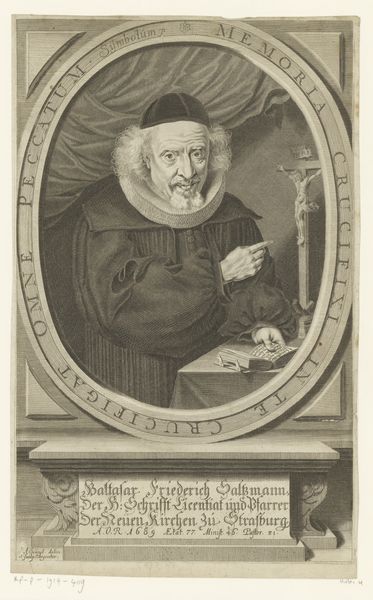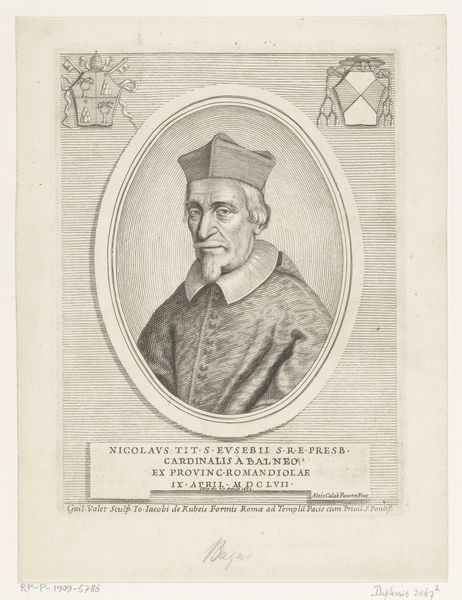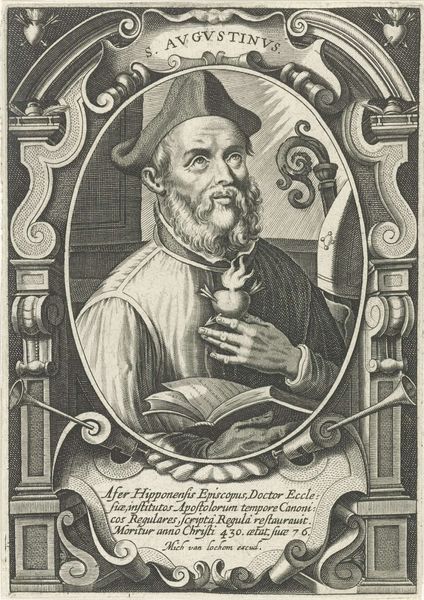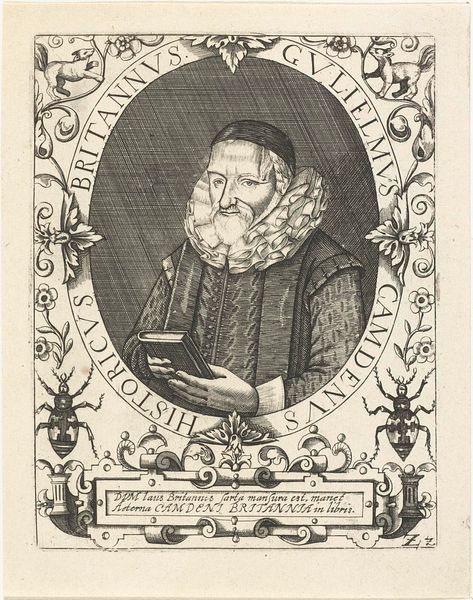
print, engraving
#
portrait
#
baroque
# print
#
old engraving style
#
history-painting
#
engraving
Dimensions: height 205 mm, width 134 mm
Copyright: Rijks Museum: Open Domain
Curator: Here at the Rijksmuseum, we have a captivating print dating back to 1726: "Portret van de heilige Filippo Neri," created by Bernard Picart. Editor: It has a sort of hushed, reverential air about it. The fine lines create a delicate yet determined portrait. It reminds me a bit of old currency—the kind meant to inspire unwavering trust. Curator: Yes, Picart certainly captured the essence of Neri, a significant figure in the Catholic Church. It is interesting to see that Neri is being memorialized here, it underscores his legacy as founder of the Congregation of the Oratory. The visual culture of this period often played a crucial role in shaping public perception of religious figures. Editor: Absolutely. You know, when I zoom in, I am really impressed with the detail Picart achieves through the engraving process. The layering and precision in the linework create such depth. The use of line weight surely dictated the sense of light here. One wonders how Picart approached the printing and whether multiple plates were used to make multiple copies? Curator: A question worth exploring. Beyond technique, the ornate Baroque frame contributes to the deification of the depicted figure, further embedding him within the church's institutional power. Editor: It's striking to consider how the act of producing such a portrait would contribute to that idealization too. Was there an accepted aesthetic canon or approach for depicting saints during the time? How might it relate to broader artistic trends and, equally important, economic ones? Who was this print made for, I wonder? Was this affordable, like printed indulgences perhaps? Curator: Excellent questions, all central to understanding the social context. Disseminating these images likely served several purposes: solidifying Neri's saintly image, promoting the Oratory, and reaffirming the church's spiritual authority in a period of immense social and political change. Editor: In any event, beyond all these sociopolitical factors, there’s something really timeless and dignified about this composition. It certainly invites thoughtful study. Curator: I agree. Analyzing its historical and cultural context gives us insights into art as an agent of history.
Comments
No comments
Be the first to comment and join the conversation on the ultimate creative platform.
